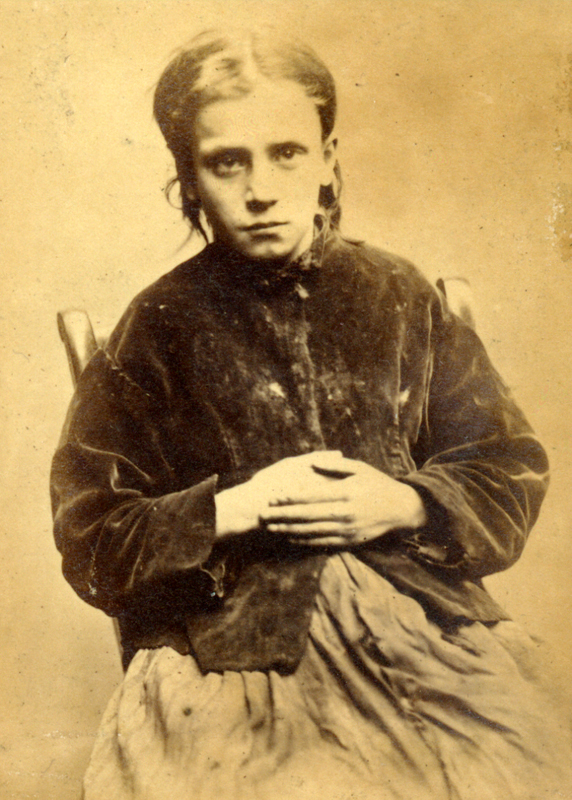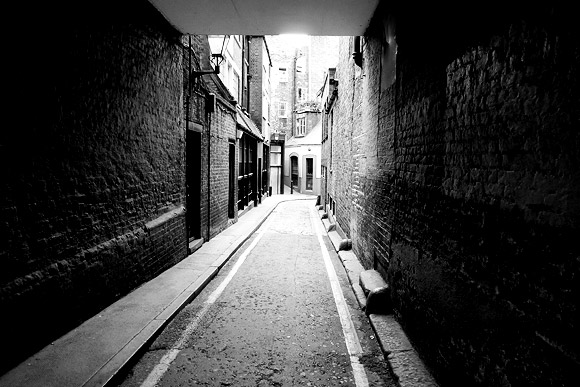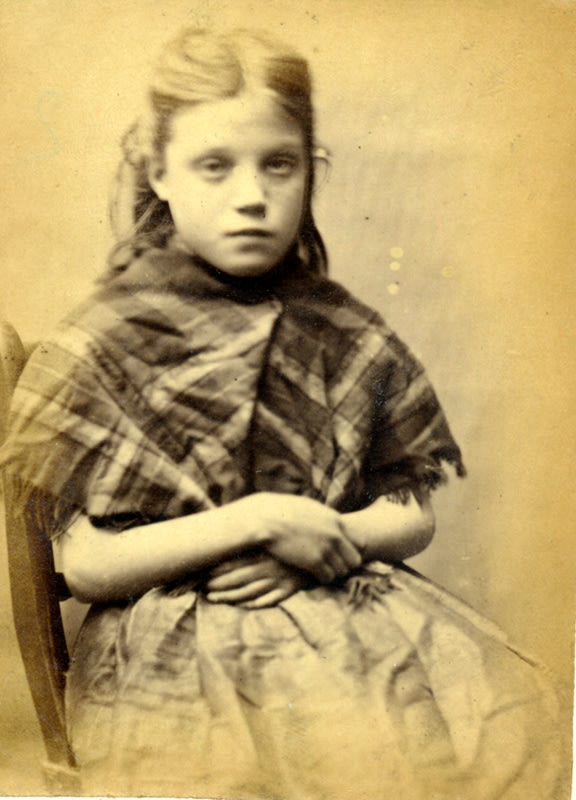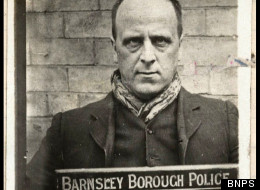For the first time in history , mass-market newspapers (in the Victorian era) were being created such as The Illustrated Police News which specialised in reporting on crime and criminals, using language and pictures that were far more lurid than that used in modern tabloids.

- The “Angel of the House” was not expected to perform acts that were sexually gratifying for herself or her partner. She was expected to be a sexless ministering angel and to know nothing except what it good.
 Sex, according to Victorian clergymen, was only for procreation; and therefore, they condemned any type of extramarital or non-procreative sex. A Victorian female’s sexual appetite should have been negligible and unnatural. Women did not have sex for pleasure, but to procreate. Sexual excitement was viewed as dangerous to the heart and nervous system; however, sex within marriage was less dangerous due to its infrequency and familiarity. This “angel of the house” mentality did not really extend to the lower classes; therefore, upper class gentlemen of means often sought out prostitutes for sexual gratification they could not expect from their “angels” at home.
Sex, according to Victorian clergymen, was only for procreation; and therefore, they condemned any type of extramarital or non-procreative sex. A Victorian female’s sexual appetite should have been negligible and unnatural. Women did not have sex for pleasure, but to procreate. Sexual excitement was viewed as dangerous to the heart and nervous system; however, sex within marriage was less dangerous due to its infrequency and familiarity. This “angel of the house” mentality did not really extend to the lower classes; therefore, upper class gentlemen of means often sought out prostitutes for sexual gratification they could not expect from their “angels” at home. - Lower class women needed a way to supplement their incomes; upper class gentlemen had expendable income – simple economics tells us that a barter system is bound to appear.
- Who Was the Average Victorian Age Prostitute?
- She was an average age of 18-22, but many started much earlier at the age of 12 or earlier.
- Virgins were much prized for several reasons – not the least of which was hygiene – Venereal disease was rampant and a virgin was thought to be untainted
- However, their first sexual experiences were not out of the ordinary – usually serial monogamy within their own class.
- Most were from poor family and as many as half were orphans.
- Their general health (outside the threat of venereal diseases) was usually better than other women of their class due to shorter hours and a higher standard of living.
- Most either had had or still had low wage jobs; some supported illegitimate children.
- Typically rouged and powdered, and dressed to enhance their “assets” – some women would have lived “double lives” working in a factory for little pay during the day and working the streets at night trying to make ends meet. For every prostitute, there was an individual path she took, but most women found themselves in “the trade” due to economic circumstances
- Catherine ‘Skittles’ Walters (1839-1920) used her skill as a horsewoman to become the favouriteGenteel Poverty saw some enter the trade
- Supplementing income from other labor
- Some were kidnapped and forced into prostitution
- Some had an illegitimate child, which meant she was “unhireable” for any other job
- Very few consciously chose to enter the sex trade, but there were some…Genteel Poverty saw some enter a form of “the trade” when their entirefortunes were inherited by a distant male relative who cared nothing for them.
- Inheritance laws stated that woman could only inherit the money that went to her marriage with her from her father – most times that was scarcely enough to live on, let alone keep up the lifestyle to which they were accustomed.
- Some women discovered that their entire lives were lies when their husbands died and creditors began to knock on their doors.
- These women found themselves with little money and no skills. Many became mistresses and courtesans.
 "Catherine ‘Skittles’ Walters, courtesan of Victorian London, noted horsewoman and famed for having the tightest riding-habit in Britain. (In Europe, only the Empress Elizabeth could compete with her for that.) Admirers watching her go by used to speculate on whether she had to be naked underneath."
"Catherine ‘Skittles’ Walters, courtesan of Victorian London, noted horsewoman and famed for having the tightest riding-habit in Britain. (In Europe, only the Empress Elizabeth could compete with her for that.) Admirers watching her go by used to speculate on whether she had to be naked underneath." - Since most of these women had been married, sex was not a new thing for them. It became a way to make sure that they were cared for and could continue their lifestyles.
- Many became the mistresses of men they had known in society when they were married. It was all treated very discreetly, of course. But just like everywhere else, there were no secrets.

Cora Pearl (1835-1886) was an English prostitute who – through sheer determination,character and charm – transformed herself into the most expensive courtesan in Paris.Famous for her outrageous antics – such as dancing naked on a carpet orchids,or serving herself up on a silver platter for dessert – and her extravagant mode of living,Cora was a forerunner of today’s modern celebrity, whose every look, word and change of dresswas noted down and circulated for the panting public. - Genteel Poverty was also responsible for another step on the path to prostitution. Many women who found themselves without means to continue their middle or upper class lives turned to skilled domestic labor jobs to survive.
Just as everything else in Victorian England, even poverty could be broken down into class. There were the low class poor, living in slums, fifteen in a room, etc… Then there was Genteel Poverty. It only accounts for a small percentage of the steps to prostitution, but it an element there none the same.
- She was an average age of 18-22, but many started much earlier at the age of 12 or earlier.
No one knows for certain, but there were somewhere between 8,000 and 80,000 prostitutes in London during the Victorian Age. It is generally accepted that most of these women found themselves in prostitution due to economic necessity. In 1875 the age of consent in Victorian Britain was raised from 12 to 13, but it was only after the public outrage that followed an investigative exposé into prostitution a decade later that it was raised to the current age of 16.

The words emblazoned in large print on top of the Pall Mall Gazette in the first week of July 1885 - NOTICE TO OUR READERS, followed by "A Frank Warning", set the tone for a week-long report titled The Maiden Tribute of Modern Babylon, exposing the lurid underworld of London's child prostitutes.

It was referred to as a "veritable slave trade".
The most shocking account focussed on a 13-year-old virgin, who was bought for the night by undercover journalist William Thomas Stead - posing as a client.

Her name was Eliza Armstrong. She was bought for £5 - the equivalent of around £527 today. She was taken to a midwife to "procure the certification of her virginity" who remarked - "The poor little thing… She is so small."

She was then brought to a brothel and drugged, and the paper's readers were led to believe the worst. She let out "a helpless, startled scream like the bleat of a frightened lamb", Stead wrote.

He described his undercover experience as: "The story of an actual pilgrimage into a real hell…"

He appealed directly to the upper classes - and accused them of being the main perpetrators. "If the daughters of the people must be served up as dainty morsels to minister to the passions of the rich, let them at least attain an age when they can understand the nature of the sacrifice which they are asked to make."The government was accused of neglecting "the daughters of the poor"

The press in Victorian Britain had considerable influence over public opinion.
Following Stead's exposé, the government passed a bill raising the age of consent to 16 before the week was out.
But had it not been for the help of a well-known social reformer at the time - Josephine Butler, this report would never have come to fruition.

She provided Stead with money to buy and rescue young prostitutes. She also put him in contact with a former brothel owner who found the girls whose stories ended up, in all their "shuddering horror", in the Pall Mall Gazette.
Butler had campaigned relentlessly for the rights of prostitutes but she found the government was not interested in raising the age of consent higher than 13.
"It took a scandal to change the law", says Dr Jane Jordan, who wrote a biography of Butler. "She felt it was the only way they were going to get their voices heard".
"Working class  girls lived in terrible conditions and there were assumptions they would be abused by their fathers and brothers anyway. There was a lack of interest in these girls as it was not going to affect the more protected middle and upper classes."
girls lived in terrible conditions and there were assumptions they would be abused by their fathers and brothers anyway. There was a lack of interest in these girls as it was not going to affect the more protected middle and upper classes."
 William Stead is remembered as one of the first investigative journalists
William Stead is remembered as one of the first investigative journalists
Following publication of Stead's report, there was moral panic. There were stories of parents being stopped in the street by morality crusaders, says Will Sydney Robinson, author of a biography on Stead.
"There was a tangible change in the atmosphere, people were talking about these issues slightly like they are today."
It soon transpired that the mother of Eliza - the 13-year-old girl - had reported her missing and had been told her daughter would be a maid, not a prostitute. Stead had alleged the mother was an eager, drunken accomplice. His credibility came into question.
He was arrested for abducting a minor and spent three months in prison.
"Stead used modern methods of sensationalism, exaggeration and law-breaking to do a good thing, but there was a bitter taste from the whole thing," says Robinson.
The problem with sensationalism is that it distorts things, says historian Dr Louise Jackson from Edinburgh University.
The Gazette's report overshadowed the day-to-day exploitation that occurred in Victorian society, she adds. Sexual abuse of all kinds was taking place but it was "probably more mundane than Stead's suggestion of people being drugged, abducted and duped".

The same act clamped down on brothels, leaving many prostitutes homeless. It also contained a last minute amendment which outlawed "gross indecency" between two men - the very law that Oscar Wilde was later sent to prison for.

"It was undoubtedly a huge victory", says Jackson, "but it certainly wasn't a liberal act, it set a puritanical tone for the next 80 years, until homosexuality was finally decriminalised in 1967".

Stead continued to edit his paper while in prison and is remembered as one of the first investigate journalists. As for the young girl Eliza, she was cared for by the Salvation Army and eventually returned to her parents.

The Crimson Petal and the White is a new four-part drama produced by Origin Pictures for BBC2 that lifts the lid on the darker side of Victorian London, revealing a world seething with vitality, sexuality, ambition and emotion.
The drama is adapted from Michel Faber's novel by acclaimed playwright and screenwriter Lucinda Coxon and directed by award-winning Marc Munden (The Devil's Whore, The Mark Of Cain). Several locations in the capital were transformed to recreate Victorian London, including the industrial grandeur of TheCrossness Engines Trust in Abbey Wood, Bexley.
The Crimson Petal and the White tells the story of Sugar, an intelligent young prostitute who yearns for a better life away from the brothel she is attached to. Highly sought after, Sugar finds her only comfort in the secret novel she is writing in which a murderous prostitute takes revenge on her clients. However, things change for Sugar when she becomes the mistress of wealthy businessman William Rackham.
Social reformer Josephine Butler was unafraid to speak out in defence of the most dejected and despised of all women at the time - the common prostitute. She challenged the double sexual standards implicit in the 1860s Contagious Diseases Acts.

Under the acts - which were introduced to reduce the high levels of venereal diseases amongst the armed forces - any woman suspected of being a prostitute was subjected to compulsory medical examinations. Their male clients escaped any such censure.

She forced the women's movement to confront the issue, so that prostitutes could reform their lives and earn respect and dignity

- Housing Situations- Because of the tremendous increase in population, housing was scarce and inadequate.
- Entire families (including extended family members) lived not only under one roof, but often slept in a single room together, multiple bodies in each bed due to lack of space or sometimes just the pragmatic reason of warmth.
- This meant siblings and even cousins of all age ranges often slept in close proximity to one another. There was zero privacy; they watched one another change clothes, bath, each house had its own outhouse in the backyard.
- Most of the poor kept whatever gardens or animals they had room for and life on a farm leaves no mysteries as to the birds and the bees.
- Escapism– Some of these young women gave in to the temptations offered in their own homes as a way of escapism.
- Poverty was a tedious and terrible life and physical pleasure may have offered a moment of freedom or peace, and the risk was well worth it.
- This suggests desperation to escape circumstances rather than moral corruption (Joyce).
- Differing Social Customs
- There wasn’t really the “angel of the house” mentality in the poorest levels of society. Sex was not viewed with the same distaste as in upper class households. It was seen more as a part of life.
- Carnal relations which marked a couple’s engagement were an important commitment and remained so for the working class. The legitimization of these acts by marriage was expected; and if unfulfilled, reflected as poorly on a man for abandoning an unmarried, pregnant girl as the girl’s promiscuity reflected on her.
- Unfortunately, many women learned too late that the traditions and expectations lower classes held one another to did not extend to their upper class contemporaries. Working class women learned that higher class seducers did not always follow through with their promises of marriage or even promised luxuries.
- Feminization of Poverty
- Unfortunately, The 1834 Poor Reform Law removed all legal means for unwed mothers. “Bastardy Clauses” denied legal or material aid for these women. This law took away all recourse for broken engagements after consummation, rapists, extortion, etc… This law granted men more sexual license thanever before and removed from them all burden of responsibility (social and economic) for illegitimate children (Logan).
- The resulting feminization of poverty helped set into motion “the greatest of our social evils” and prostitution and infanticide became the defining “sins” of the age.
Seduction – Harriet Martineau said in 1870, “There is the strongest temptation to prefer luxury with infamy to hardship with unrecognized honour.” Many women simply made the decision to make this lifestyle their chosen occupation. Sex sells – and that isn’t an invention of the 21st century.
- Better pay – better hours – Easier work
- Some had suffered sexual abuse as children Promiscuity is often a result of sexual abuse, so this was an easy choice for some of them to make.
- Social Freedom
- Prostitutes often lived in groups and created their own social networks. When one from the group got arrested, the others would collect enough money to bail her out.
- They cared for one another when no one else did.
- Prostitutes could enter places like pubs, taverns, and bars without the social stigma that a “lady” would carry.
- Some became mistresses and courtesans
- They were very sought after because they were more natural, less repressed, and less boring than the well-bred girls who came to London for the marriage season
The Fate of the Prostitute
- Reform
- Magdalene Asylums began with the mission to rehabilitate women back into society, but as the 19th century progressed, they became ever more punitive and prison-like. Women were required to weak the severest of clothing, participate in hard physical labor, devote themselves to long periods of prayer, and live in enforced silence. The appearance and behavior of the “reformed” women labeled them as prostitutes just as their appearance and behavior on the streets labeled them as prostitutes. Interestingly, the last of these closed in 1996.
- Lock Hospitals were designed to treat venereal diseases (one of the side-effects of widespread prostitution). They later developed into rehabilitation homes for the discharged patients. Unfortunately, the conditions in the “rescue home” weren’t much better than the Magdalene Asylums.
- Reform Houses – There were reform houses who broke away from the punitive practices of the Magdalene Asylums and Lock Hospitals – one of the most known was Dickens’ own Urania Cottage. Urania Cottage focused on reform with a goal of emigration to the colonies – South Africa or Australia. There were several successes here – see Revisiting Dickens for additional info.
 Marriage to former clients was not unheard of. Many would save their money in order to change occupations and settle down at some point. This was tolerated in their communities because it was a common story. Emigration to the colonies was another hope for prostitutes. If she were single and able to save a little money – there was passage to be bought to one of the colonies. What better place to get a fresh start.
Marriage to former clients was not unheard of. Many would save their money in order to change occupations and settle down at some point. This was tolerated in their communities because it was a common story. Emigration to the colonies was another hope for prostitutes. If she were single and able to save a little money – there was passage to be bought to one of the colonies. What better place to get a fresh start.


No comments:
Post a Comment